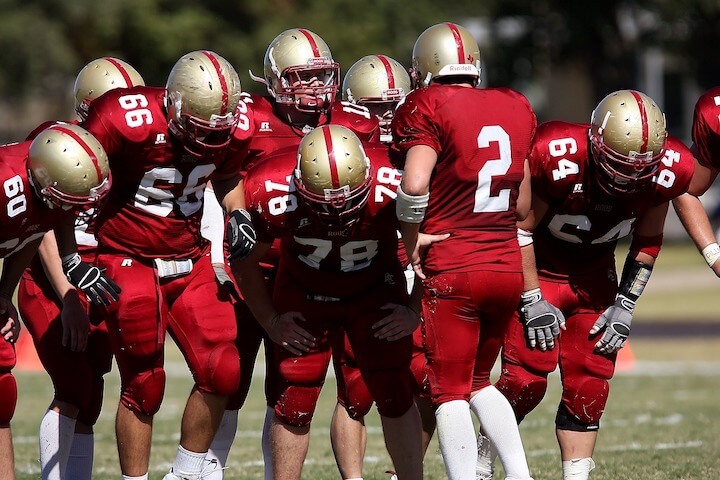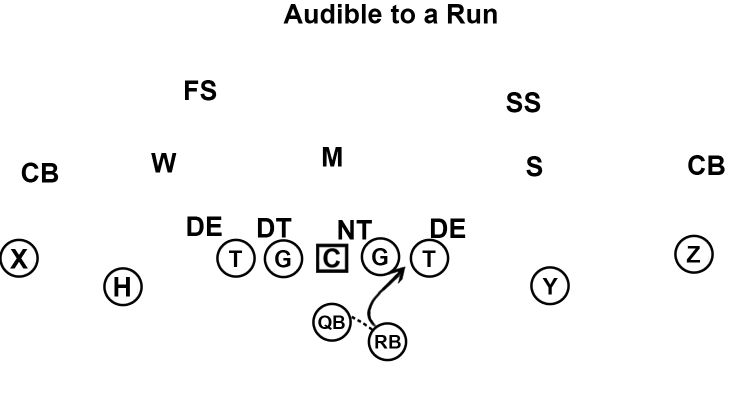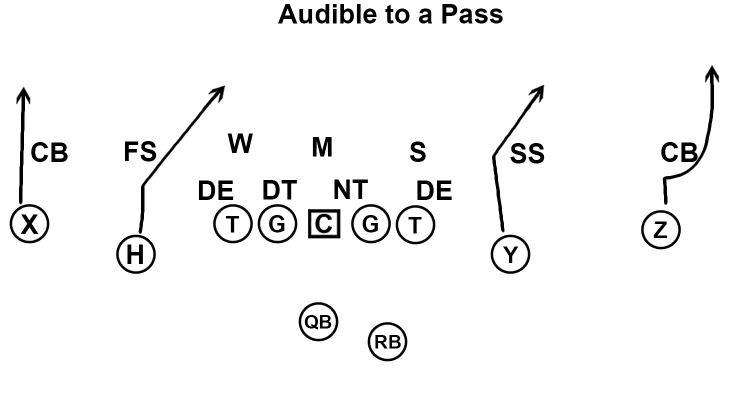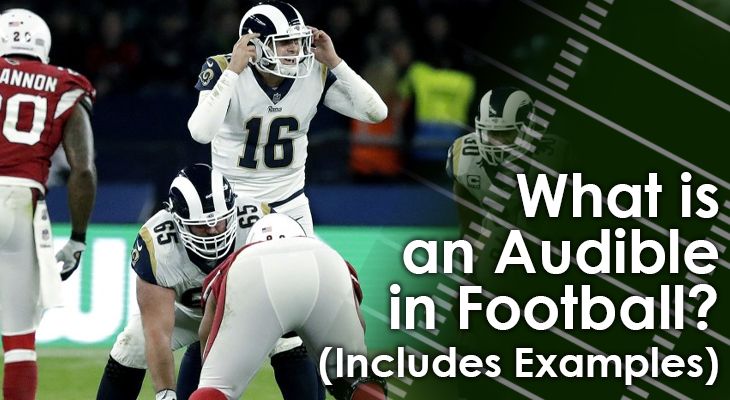Before the start of each down, a coach from the sideline selects a football play that he wants the offense to run.
He'll communicate that play to the quarterback in any number of ways depending on the level of football:
- Telling a player on the sideline who will run into the huddle and tell the QB.
- Through hand signals given by coaches on the sideline.
- Through a headset (at the professional level)
The quarterback's job is to communicate the play call to the rest of the offense in the huddle, and then successfully execute the play after the ball is snapped.
When the coach calls the play, he'll be anticipating what he feels will be a good fit based on (1) the down-and-distance, (2) how he thinks the defense will line up, and (3) how he thinks the defense will react.
There are times, though, when the play the coach calls IS NOT a great fit for how the defense is lined up.
At other times, there may be a good opportunity to take advantage of a mismatch based on how the defense is aligned before the snap.
In these instances, the quarterback can do what's called an audible.
When he calls an audible, he will be changing the play at the line of scrimmage to a new one that's different from what was called in the huddle.
The offense will then run that play instead of the original play the coach called, hoping to take advantage of the situation the quarterback saw when he approached the line of scrimmage.
Let's take a closer look at what an audible in football is, along with some examples of how they can be called.

Who Calls an Audible?
In youth football, the quarterback may not have the freedom to call audibles on his own.
As players are just learning how to play the game, they won't have the knowledge of certain situations to see whether it would be a good time to call an audible.
In youth football, then, it's often a coach who will call an audible from the sideline if he sees an opportunity to change the play.
He'll call to the quarterback that he wants an audible, and indicate the play he wants it changed to.
The quarterback's job is to then communicate that to the other offensive players who are already lined up.
As players know the game more and graduate to higher levels of the game, quarterbacks will be given the freedom to call their own audibles based on what they see after they break the huddle.
In high school football, the coach may give the quarterback a set of a few plays he can audible to.
In college football and especially in the NFL, quarterbacks often have the freedom to audible to whatever play they want.
How Audibles are Called
When the offense breaks the huddle and approaches the line of scrimmage, the quarterback's job is to scan the field to see how the defense is aligned.
If he recognizes that the defensive alignment doesn't match up well with the play that is called, he will audible out of that play and into a new one.
Likewise, if the quarterback recognizes the opportunity for a big play based on the defensive alignment, he can also call an audible to a new play.
When he wants to call an audible, the quarterback will step back from the center (if he's lined up under center) and walk to each side of the field.
He'll signal that he is calling an audible based on what his coaches have set.
In many cases, the audible could be indicated by calling out a specific color such as "black" or "red." The quarterback could also use a word such as "kill," which means he's "killing" the original play called in the huddle and switching to a new one.
Then, he'll call out the new play to all the players on both sides of the field.
Once he finishes doing that, he'll again approach his original lined-up position and run the new play.
Audible to a Run

Let's assume the down-and-distance is 2nd-and-10 for the offense, and the coach calls a passing play with four wide receivers spreading the field, and one running back in the backfield.
When the offense comes out of the huddle, the quarterback realizes that the defense has dropped multiple players back into coverage.
The outside linebackers are cheating toward the outside to help in pass coverage, and the middle linebacker took a few steps back.
This could provide a great opportunity to gain good yardage with an off-guard run to the left or right side of the field.
The quarterback may then audible out of the passing play and into the run to try to take advantage of the way the defensive has aligned itself.
Audible to a Pass

Let's assume the down-and-distance is 2nd-and-2 for the offense, and the coach has called a running play up the middle.
The offense is aligned with the same four wide receivers, with one running back in the backfield.
This time, though, when the offense comes out of the huddle, the quarterback recognizes that the two safeties have stepped up to cover the slot wide receivers, while the linebackers are crowding closer to the line of scrimmage.
In this case, it may be hard to find open running room in the middle of the field.
At the same time, there's a great opportunity to gain big yardage on a longer pass, since it's man-to-man coverage on the wide receivers with no help over top.
The quarterback, then, might audible to a passing play where at least some of his receivers run a deeper route to try to take advantage of the lack of over-the-top help.

